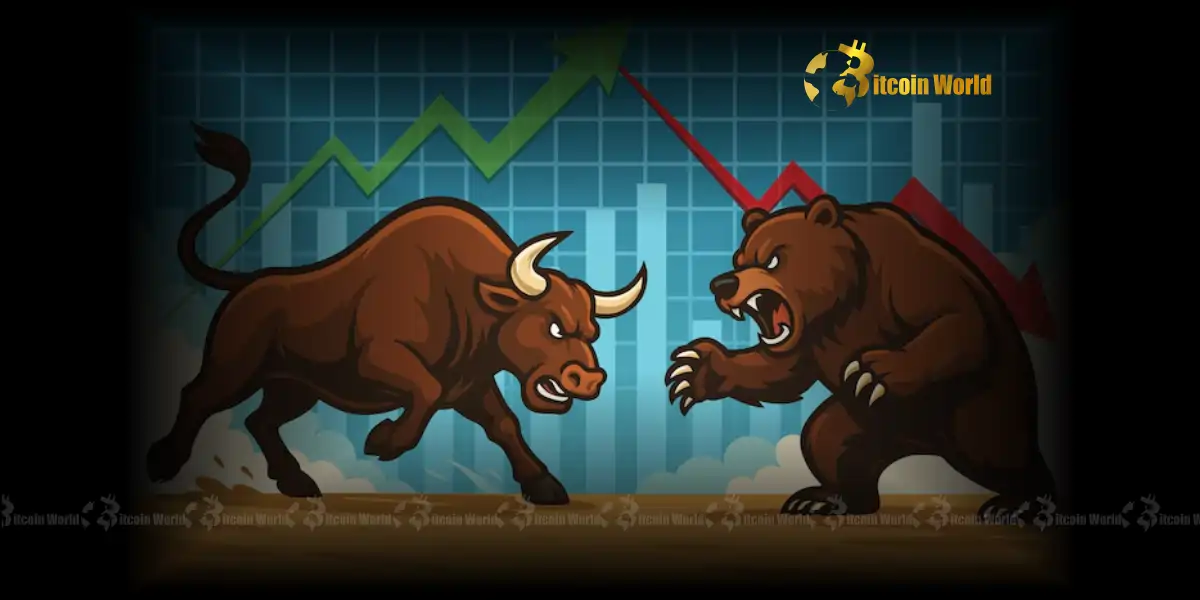BitcoinWorld

Urgent: USD/INR Forecast Hits 85 on Expected RBI Rate Cuts
For those navigating the dynamic world of finance, understanding shifts in major currency pairs is crucial. While cryptocurrencies often grab headlines, the stability and direction of traditional currencies like the Indian Rupee (INR) against the US Dollar (USD) have significant implications for global markets, capital flows, and even investor sentiment. A recent analysis from investment bank UBS has caught attention, projecting a notable move for the USD/INR forecast. They anticipate the pair could reach 85, a level driven primarily by expectations of the Reserve Bank of India (RBI) potentially implementing rate cuts sooner than many expect.
What is Driving the UBS USD/INR Forecast?
UBS’s projection of the USD/INR forecast reaching 85 is rooted in a specific macroeconomic view: the likelihood of the Reserve Bank of India (RBI) front-loading its interest rate cuts. Central banks use interest rates as a key tool to manage inflation and stimulate economic growth. Higher rates can attract foreign investment seeking better returns, strengthening a currency. Conversely, lower rates can make a currency less attractive relative to others, potentially leading to depreciation.
Here’s a breakdown of the core argument:
- Expected RBI Action: UBS believes the RBI may begin cutting its benchmark interest rate earlier in the cycle compared to previous expectations or potentially before the U.S. Federal Reserve makes significant moves.
- Interest Rate Differential: If India’s interest rates fall while U.S. rates remain steady or fall at a slower pace, the gap between returns offered in India versus the U.S. narrows. This makes holding Rupee-denominated assets less appealing to international investors compared to Dollar-denominated assets.
- Impact on Currency Value: Reduced demand for the Indian Rupee from foreign investors, coupled with potentially increased demand for the Dollar (as it offers relatively better returns or perceived safety), can lead to the Rupee weakening against the Dollar. A higher USD/INR forecast number means it takes more Rupees to buy one Dollar.
Why Would the RBI Cut Rates Early?
Central banks like the RBI typically consider several factors before adjusting interest rates. While UBS’s specific reasoning wasn’t fully detailed in the initial note, common drivers for early rate cuts can include:
Cooling Inflation: If inflation shows a consistent downward trend and is projected to reach or stay within the central bank’s target range, it provides room to lower rates without risking price stability.
Supporting Economic Growth: Lower interest rates reduce borrowing costs for businesses and consumers, which can stimulate investment, spending, and overall economic activity. If growth shows signs of slowing, rate cuts can be used as a boost.
Global Economic Conditions: Actions by other major central banks (like the Fed or the European Central Bank) and the global economic outlook can influence the RBI’s decisions to maintain competitiveness or respond to shifts in global capital flows.
Fiscal Policy Coordination: Sometimes, monetary policy (interest rates) is coordinated with fiscal policy (government spending and taxation) to achieve broader economic goals.
Understanding the Indian Rupee and Forex Market Dynamics
The Forex market India, specifically the USD/INR pair, is influenced by a complex interplay of domestic and international factors. Beyond interest rates, key elements include:
- Capital Flows: Foreign direct investment (FDI) and foreign portfolio investment (FPI) into and out of India significantly impact Rupee demand. Strong inflows strengthen the Rupee; outflows weaken it.
- Trade Balance: The difference between India’s exports and imports affects the supply and demand for the Rupee. A trade deficit (imports greater than exports) typically puts downward pressure on the currency.
- Oil Prices: India is a major importer of oil. Higher oil prices mean India needs more Dollars to pay for imports, increasing Dollar demand and potentially weakening the Rupee.
- Global Risk Sentiment: In times of global uncertainty, investors often flock to safe-haven currencies like the US Dollar, leading to depreciation in emerging market currencies like the Rupee.
- RBI Intervention: The RBI actively manages the Rupee’s volatility, buying or selling Dollars to prevent sharp movements that could harm the economy.
UBS’s analysis places significant weight on the interest rate differential, suggesting it will become a primary driver for the Indian Rupee‘s movement against the Dollar in the near to medium term.
How Does UBS Analysis Fit into the Bigger Picture?
UBS analysis is just one perspective in the diverse world of Forex forecasting. Different institutions and analysts will have varying views based on their economic models, data interpretation, and assumptions about future central bank actions and global events. However, a forecast from a major global bank like UBS carries weight and is closely watched by market participants.
It’s important to remember that Forex forecasts are not guarantees. They are projections based on current information and expected future developments. Unexpected economic data, geopolitical events, or shifts in central bank communication can quickly alter the outlook.
What Are the Potential Challenges and Opportunities?
A weaker Indian Rupee, as suggested by the USD/INR forecast of 85, presents both challenges and opportunities for different segments of the economy and market participants.
Challenges:
- Imports Become More Expensive: Businesses and consumers importing goods or raw materials will face higher costs in Rupee terms, potentially leading to imported inflation.
- Foreign Travel/Education Costs: Sending money abroad for education or funding foreign travel becomes more expensive.
- Servicing Dollar Debt: Indian companies or the government with outstanding debt denominated in US Dollars will find it more expensive to repay in Rupee terms.
Opportunities:
- Exports Become More Competitive: Indian goods and services become cheaper for foreign buyers, potentially boosting export volumes and earnings for businesses.
- Boost for IT and Services Exports: The large Indian IT and services sector, which earns significant revenue in Dollars, benefits from converting those Dollars into more Rupees.
- Attracting Foreign Investment (Rupee Assets): While the interest rate differential might narrow, a potentially undervalued Rupee could attract investors looking for entry points into Indian assets, especially if they believe the depreciation is temporary or overdone.
Actionable Insights for Navigating the USD/INR Movement
Given the USD/INR forecast and the potential for volatility, what steps can businesses and investors consider?
- Monitor RBI Communications: Pay close attention to the RBI’s monetary policy statements, press conferences, and any forward guidance on inflation and growth outlooks. These provide clues about potential rate decisions.
- Track Inflation Data: Keep an eye on India’s Consumer Price Index (CPI) data. A sustained drop in inflation increases the probability of rate cuts.
- Follow Global Central Banks: Monitor the actions and statements of major central banks, particularly the U.S. Federal Reserve, as their policies impact the interest rate differential and global capital flows.
- Consider Hedging Strategies: Businesses with significant Dollar exposure (either receivables or payables) might consider hedging strategies using forwards, futures, or options to lock in exchange rates and mitigate currency risk.
- Diversify Portfolios: For investors, understanding currency risk is part of broader portfolio management. Diversification across asset classes and geographies can help manage this risk.
- Consult Financial Advisors: For specific financial situations, consulting with a qualified financial advisor who understands Forex markets and macroeconomic trends is advisable.
This UBS analysis serves as a reminder that even in a world captivated by digital assets, the fundamentals of traditional finance, like central bank policy and currency dynamics in the Forex market India, continue to play a vital role in the global economic landscape.
Summary: What Does This Mean for USD/INR?
In essence, UBS is calling for a potential move towards 85 for the USD/INR forecast. This outlook is heavily predicated on their view that the Reserve Bank of India is likely to initiate interest rate cuts earlier than generally anticipated. Such a move would narrow the interest rate differential between India and the US, potentially reducing the attractiveness of Rupee-denominated assets and leading to a weaker Indian Rupee against the strong US Dollar. While this presents challenges like more expensive imports, it could also offer opportunities, particularly for Indian exporters. Navigating the Forex market India requires careful monitoring of central bank actions, economic data, and global sentiment, as highlighted by this significant UBS analysis.
To learn more about the latest Forex market trends, explore our article on key developments shaping the Indian Rupee and global currencies. Read more here.
This post Urgent: USD/INR Forecast Hits 85 on Expected RBI Rate Cuts first appeared on BitcoinWorld and is written by Editorial Team





